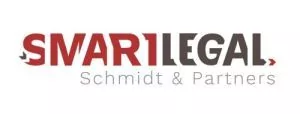A trademark right gives the proprietor the sole right to use and exploit the trademark and to prohibit others form using that trademark. However, there is an exception from this general prohibition, which is the principle of exhaustion giving possibility for parallel importers to commercialize trademarked goods. In this article we summarize when trademark rights are exhausted under the EU law.
1) Harmonized EU law
When it comes to the exhaustion of trademarks rights, it is fully harmonized within the European Union in order to ensure the free movement of goods. The exhaustion applies to both the trademarks of an EU Member State ("national trademark") and to the European Union trademarks ("EU trademark").
The exhaustion of trademark rights occurs throughout the European Economic Area (EEA) and the territorial scope of the exhaustion cannot be broadened by the national laws of an EU Member State1.
2) The exhaustion-rule
Based on the exhaustion rule the use of the trademark cannot be prohibited in relation to goods which have been put on the market in the EEA under that trademark by the proprietor or with his consent.
Even if the above conditions are met, exhaustion does not apply if the proprietor has legitimate reasons to oppose further commercialization of the goods.
First, we will analyse the general conditions of the exhaustion rule, while in a further article we will examine what are legitimate reasons based on which the proprietor can still prohibit the use of trademark.
3) Putting on the market
The first condition of the exhaustion is that the individual goods bearing the trademark shall be put on the market in the EEA.
The goods are only considered to be put on the market if the proprietor carried out an act, for example a sale, which allows him to realise the economic value of the trademark. Sole preparatory acts, such as importing are not sufficient for the exhaustion2.
In several case, the CJEU dealt with the issue, whether the exhaustion rule applies in relation with trademarked samples of goods (eg. small perfume battles and testers) which the proprietor provides to authorized dealers. In these cases, the CJEU held that if the proprietor makes available the testers for demonstration purposes and prohibits their sale, the goods cannot be considered as put on the market3.
4) The proprietor's consent
The exhaustion only takes place if putting on the market has been carried out by the proprietor or with his consent.
It is easier to decide whether it was the proprietor who put the goods on the market. It is much more difficult to establish if putting on the market happened with the proprietor's consent.
Based on the CJEU's case-law, the burden of proving consent rests on the person seeking to justify the commercialization of the trademarked goods4, and it is not for the proprietor to demonstrate the absence of the consent.
5) Under that" trademark
Finally, putting on the market shall happen under the same trademark in order for the exhaustion rule to be applicable.
It is the CJEU's well-established case law that the exhaustion rule does not apply if the parallel importer replaced the original trademark with another one used by the proprietor in the country of importation.
However, the exhaustion rule may apply if the replacement is objectively necessary in order to place the products on the market in the country of importation5.
Footnotes
1. CJEU C-355/96. Silhouette International v Hartlauer
2. CJEU C-16/03, Peak Holding
3. CJEU C-127/09 Coty Prestige Lancaster Group, C-324/09 L'Oréal v. eBay
4. CJEU C-414/99, 416/99 Zino Davidoff and Levi Strauss
5. CJEU C-379/97Pharmacia & Upjohn SA
The content of this article is intended to provide a general guide to the subject matter. Specialist advice should be sought about your specific circumstances.


